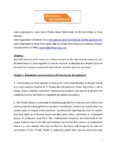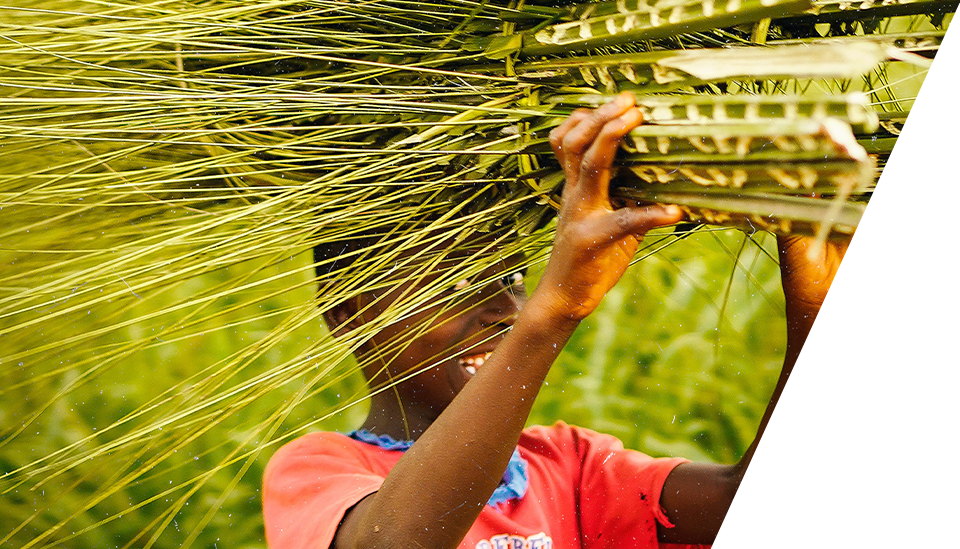
IAFN Submission of Views for the 2024 Summit of the Future
The 2024 Summit of the Future is a critical moment for the international community and all stakeholders to come together to chart an inclusive, sustainable and resilient future for the world and we look towards this Summit with renewed optimism and hope.
Chapter I. Sustainable development and financing for development
1. Transforming our food systems is among the most powerful ways to change course and make progress towards all 17 Sustainable Development Goals. Agriculture in all its totality: crops, livestock, horticulture, fisheries and forestry is the source of all food and nutritional security and must be integrated into global discussions.
2. The Private Sector is committed to addressing global food insecurity and nutrition and working towards making global food systems more efficient, resilient and sustainable. The private sector is integral to food systems – producing the vast majority of all the world’s food and made up of diverse actors including family farms, community or cooperative groups of producers, local fisher folk, multinational companies and individuals in the supply chain to ensure that safe and nutritious food moves from where it is produced to where it is most needed. We hope the Pact for the Future will recognize the role and commitment of the Private Sector in achieving global food security and encourage increased collaboration and support from Governments. In particular, the role of farmers and SMEs are critical and needs support for engagement.
3. The UN tells us that more than 80 per cent of the world’s extreme poor live in rural areas. Addressing rural multidimensional poverty as a critical part of food systems transformation is therefore another key element towards achievement of the SDGs. We encourage governments and all stakeholders to tackle the varying layers of disadvantages faced by rural and urban poor populations, including chronic poverty and hunger, lack of access to health care, lack of infrastructure, schools and telecommunications connectivity and reliance on informal markets in the efforts towards resilient and sustainable agriculture and access to formal markets for smallholder farmers.
Chapter II. International peace and security
The world is at a critical moment where increased conflict threatens international peace and security. It is more important than ever that all Parties come together to chart a path towards peace and security for all. Food security is greatly affected by conflict and resources are needed for humanitarian aid as well as long term rebuilding of food systems in affected regions. The UN Committee on World Food Security complete a Framework for Action https://www.fao.org/3/bc852e/bc852e.pdf
Chapter III. Science, technology and innovation and digital cooperation
Promote and support advancements in science and innovation across the food value chain. Science and technology to support the development of safe, nutrient dense, more resilient crops, livestock, fisheries, horticulture and agro-forestry. Innovation can transform the agri food sector and the Private Sector is the leading source of innovation in the sector.
Access to bandwidth and cloud computing services is essential, and must be expanded in rural areas. It is important to encourage innovative uses of technology throughout the agrifood chain to capitalize on the strengths of young people and maximize yields; use technology, automation, and data-driven aspects of modern farming to engage more young farmers.
It is important to incentivize the development of technology and facilitate its uptake, including in rural areas and among women, youth and farmers.
Chapter IV. Youth and future generations
The private sector supports calls for youth voices and representatives to be integrated into all multistakeholder processes and forums. The UN Committee on Food Security has made policy recommendations on youth engagement: https://www.fao.org/3/nj971en/nj971en.pdf
In particular, we call out the need to develop systems with the unique needs of young people in mind. This includes work to eliminate high barriers to entry into agriculture, especially for young people who do not inherit land and/or knowledge from their families. www.agrifood.net. It is also essential to create and publicize opportunities to access innovative financing, access to credit, land tenure laws, accessible trainings, and ongoing professional development, with attention to the fact that the timeline for agricultural innovation is longer than that for other industries.
We also encourage global commitment of resources to develop knowledge and capacity among the next generation of farmers and agripreneurs. This would involve investing in tertiary education for agriculture, with a focus on numeracy and finance; agronomics; communications and marketing; agriculture-specific business management; supply chain management; logistics; food processing and value addition; and innovative retail. It also requires improving rural advisory and extension services, with a stress on (1) focusing on best-fit approaches, (2) embracing pluralism, (3) using participatory approaches, (4) developing capacity, and (5) ensuring long-term institutional support.
-
PSM – Submission of Views for Summit of the Future – 2024
The 2024 Summit of the Future is a critical moment for the international community and all stakeholders to come together to chart an inclusive, sustainable and resilient future for the world and we look towards this Summit with renewed optimism and hope.
Download


